why i make sculpture:
Materials are neutral, they just exist and only become sculpture when I handle them. This allows me to live in a world where whatever I see is recognized as existing in the verge of creativity.
why i make sculpture:
Materials are neutral, they just exist and only become sculpture when I handle them. This allows me to live in a world where whatever I see is recognized as existing in the verge of creativity.
Evan Holloway is an American artist who lives and works in LA. He received his MFA from The University of California. Holloway is a sculptor whose work is inspired by music, color theory, economics, and mathematics, looking somewhat like geometrical systems or color spectrum charts. His work is based on his investigation in the simple and fundamental transactions between people and objects to create sculptures that are both abstract and figurative.
Frieze’s Sally O’Reilly describes Holloway’s work:
“Evan Holloway’s work requires the viewer to crouch, peer or circumnavigate each piece. The reward is a glimpse of a spatial, optical or notional somersault. His objects are like compounds with a long-forgotten use, outlandish yet made up of tantalizingly familiar components, all twisted or going off at angles in a most obstreperous manner. Holloway sprinkles Modernist references throughout his work like cheap cologne, and these welded formal structures act as branches or shelves on which to hang his set of preoccupations. Yet it is difficult to pare the residue of Modernism away from the scatter of contemporary cultural references. It is not easy to see which came first, as he has managed to intertwine the two in a seamless, symbiotic coupling.
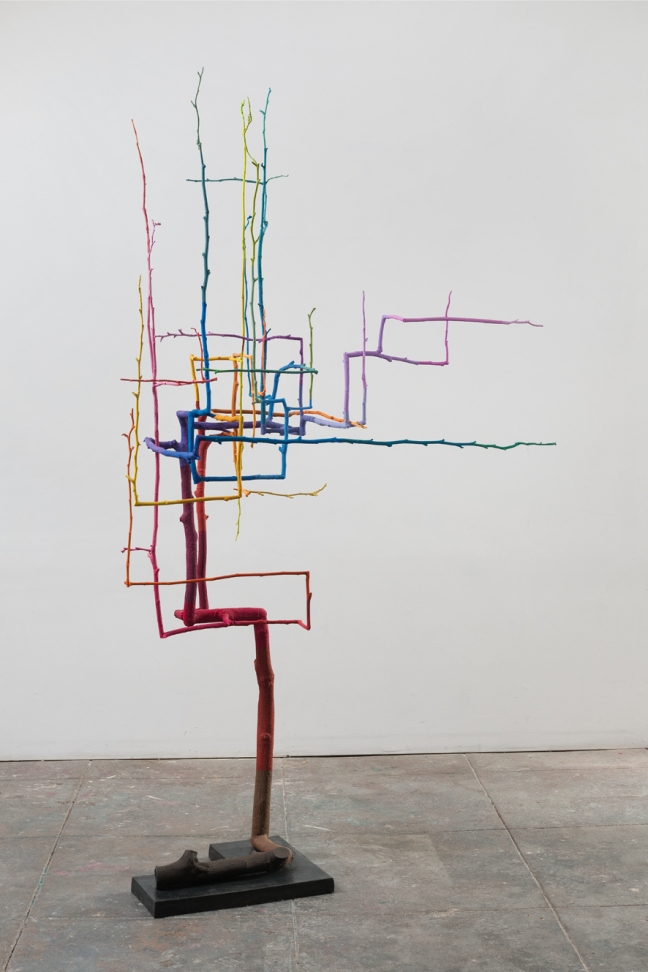

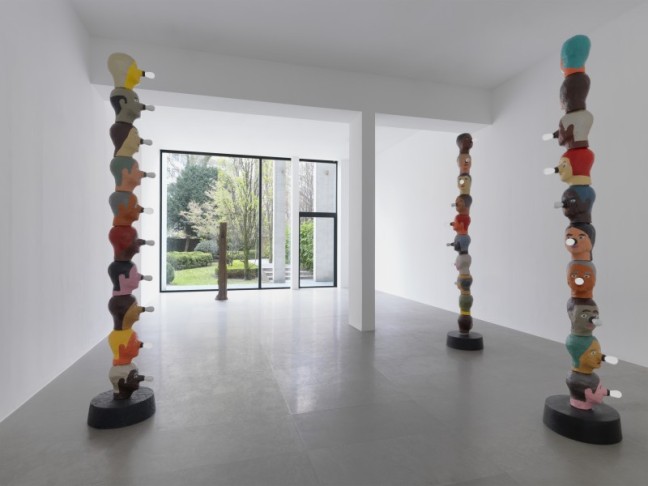
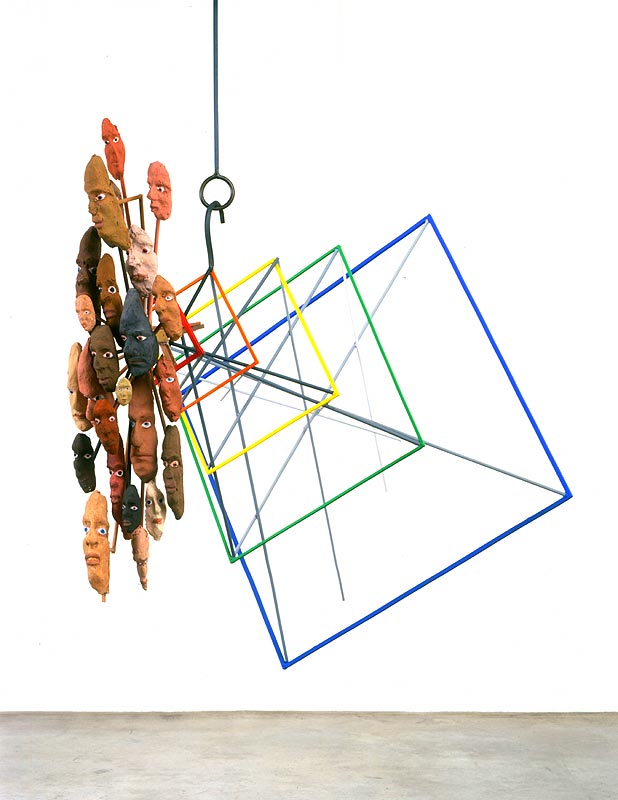
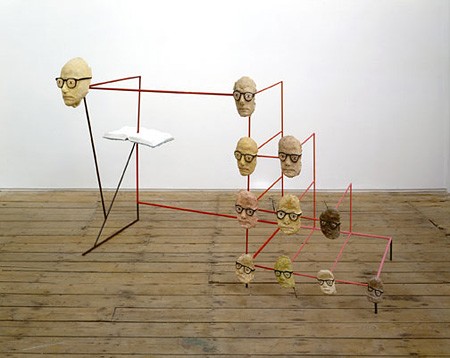
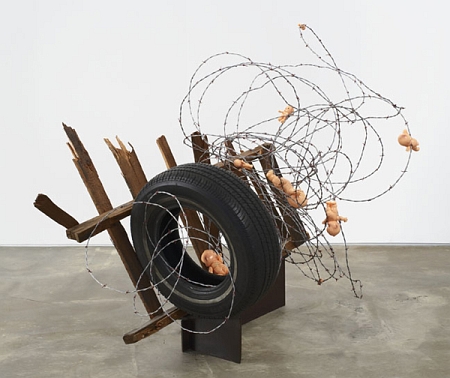
Subject vs. content: Sculpture is made up of found objects and materials, a broken wooden fence, a tire, barbed wire, and plastic naked baby dolls. The sculpture is elevated up on 2 adjacent wood planks. The barbed wire appears untamed and is coming out of the inside of the tire. The plastic babies are wrapped up or caught in the barbed wire almost as if they are getting sucked into a vortex. The wooden fence is jagged and broken appearing dangerous.
I think that the artist could be talking about the subject of abortion. These babies look like they are getting sucked in to another dimension. Where do the babies go when they are aborted? Another idea could be that he is talking about all human life in general getting sucked in to this materialistic world that we live in, forgetting about what really matters and remaining present in every moment. The world can be a dangerous place if we allow it to be, it’s all based on our own perception.
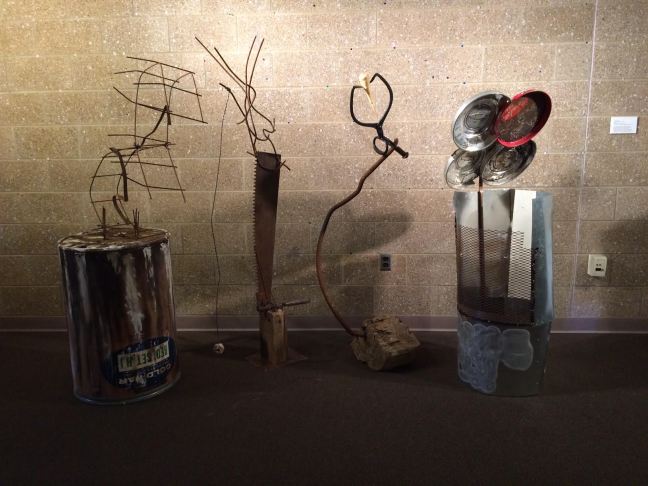
My recent body of work “Compulsive Engagement” has been inspired by addiction and homelessness. I am particularly interested in the different stages of addiction that a person might go through when they are dependent on a certain substance or activity. My work uses found objects and materials and look almost as if a homeless person themselves has put the work together. For example, in “Homeless”, a 4ft tall assemblage of various sheet metals, and hub caps, resembles a garbage can, similar to the one Oscar the grouch might be living in. Here I am indicating what happens when addiction takes over and you are living on the streets of New York City begging for change for drugs.
Martin Puryear’s creates objects and public installations using materials such as wood, stone, tar, wire, and various metals. He is known for his minimalistic work as well as devotion to tradition craft. His career started in the 1960s around the post-minimalist movement. Puryear started out working in painting, drawing and printmaking and later committed to sculpture.
Idiosyncrasy: After his undergrad, Puryear spent two years as a Peace Corps volunteer in Sierra Leone where he learned local woodworking techniques.
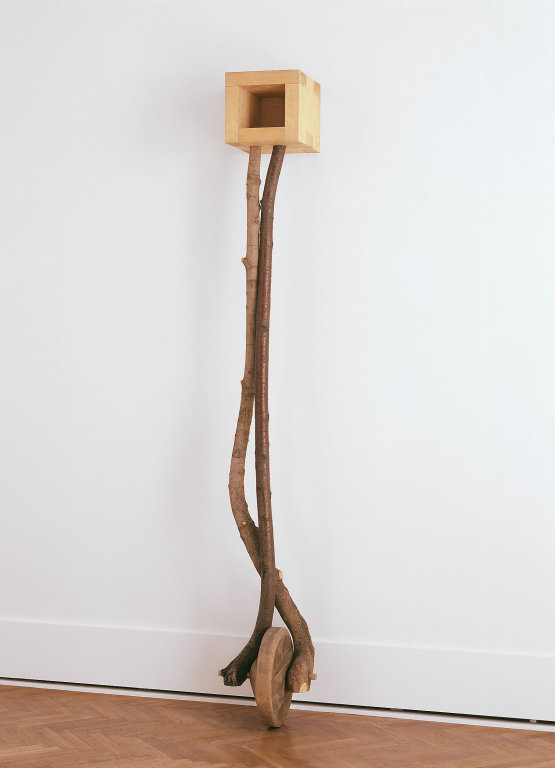
“Sanctuary” 1982 Pine, maple, and cherry wood

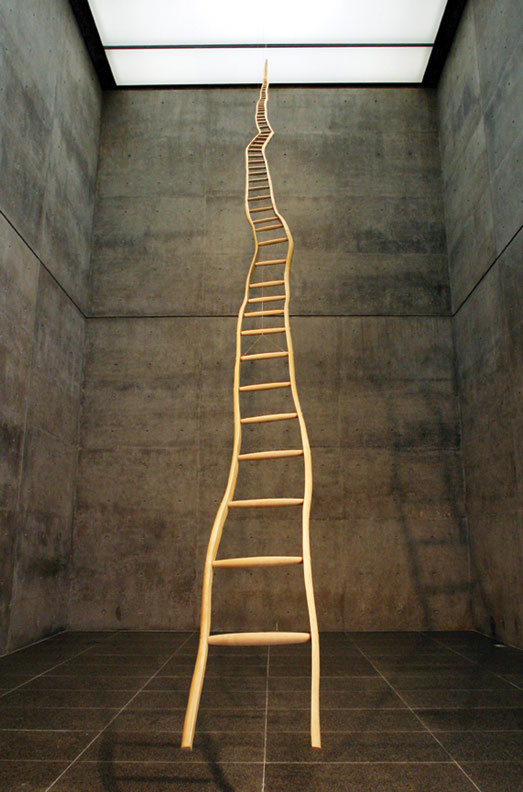
“Ladder for Booker T. Washington” 1996 ash and maple

“Confessional” 1996-2000 wire mesh, tar and various woods
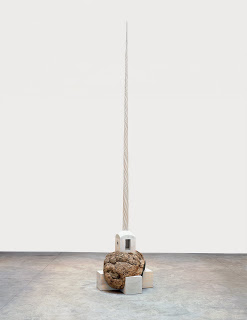
“A Distant Place” 2005 Basswood, yellow cedar, white pine and maple burl
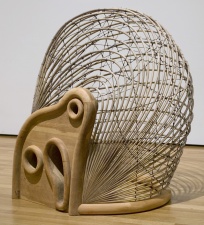
“Untitled” 2005 white pine, wire and rattan
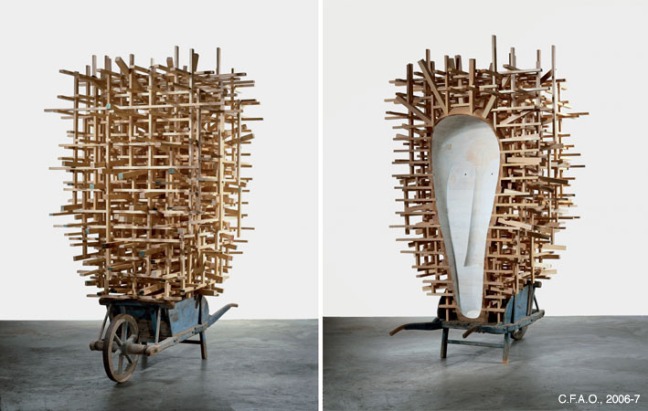
“C.F.A.O” 2006-2007 painted and unpainted pine and found wheelbarrow
Subject vs. Content:
“Ladder for Booker T. Washington” A 36 foot tall ladder made entirely of wood extends from the ground up becoming more and more narrow as it reaches the ceiling. The foot of the ladder is descended off the ground to give the effect that the ladder is floating.
I think the artist is trying to evoke a feeling from the viewer of hope and to reassure you that the “climb” in life may seem steep and unknown at times but it does all come together.
Another meaning the artist may have had was to put the viewer into a meditative state as they imagine themselves walking up the ladder, spindle by spindle, step by step .
Allan Kaprow, born in New Jersey in 1927, was an important figure in the fluxus movement of the 1960s. He was inspired by John Cage and Jackson Pollock. He coined the term “happenings” which was used to describe a series of multi-media artworks on display in a single location. A happening was any staged art event that required active participation from an audience to complete the work of art which revolutionized the practice of performance art. Kaprow started out his career as a painter but by the mid 1950s he became interested in the shifting concepts of space as subjectively experienced by the viewer. Allan emerged out of the group of artists known as the Rutgers Group, based out of Rutgers University where he taught art history and studio art. Kaprow rejected abstract expressionism and instead focused on an intellectual and theorized view of art. He used the “action” way of painting in Abstract Expressionism to create performance art.
All of this changed the definition of the art object. Now art could be anything including movement, sound and even scent. Kaprow’s pieces involved spaces that he physically altered with deliberate sights and sounds.
Subject vs. content statement:
The entire right side of the sculpture appears wild and dangerous, giving the impression that something harmful or evil is happening or will happen. The object within the grasp of danger, has the essence of purity, taking on somewhat of an amoeba affect, as if it is resisting or reacting to something or trying to escape.
The sculpture symbolizes addiction and represents a pure soul being taken over by the condition of being addicted to a particular substance or activity.
Question 1: What is situational reality and what other art form is it very closely aligned with?
Answer: A direction that programs a controlled situation that evokes a viewers response and participation. It is closely aligned with humanization/process.
Question 2: What is the problem with some situational reality pieces? What do they sometimes come off as?
Answer: sight gags, visual puns, cheap shots, trivial exercises.
American conceptual sculptor born in 1965, known for his work with employing everyday materials into intricate geometric arrangements.





Subject vs. Content Statement:
“Up-In-The-Air”
A room with hundreds of man-made, everyday objects meticulously hung from the ceiling. As you step into the room you are confronted with objects that are grouped together and hung at various heights and distances. These objects are all ordinary but when grouped together in such a way, the viewer starts to ask themselves why these objects are grouped together in such a way and how they all relate to one another. The viewer starts to observe the objects and the space that is around them. As you navigate through you start understand the importance of the everyday objects and the space around them, you begin to look at these everyday objects completely differently. You start to see that these objects can be used for more than just what they are advertised for. You begin to see just how interesting the objects that you have seen a thousand times and disregarded really are. I believe that Friedmans purpose behind this piece was to place these objects in front of the viewer so that they can look at the mundane, everyday differently. Friedman uses objects to create an overall language. He is using an object to signify something and then another object to signify something else. Together, all of the objects signify one meaning. He is pushing the boundaries on what art is.
Critique:
“Tom Friedman’s several bodies of work do not exactly add up to anything overall. Although the strategies are often similar, the pieces do not develop one out of the other, forming a kind of narrative.” – Daniel Baird from Brooklyn Rail